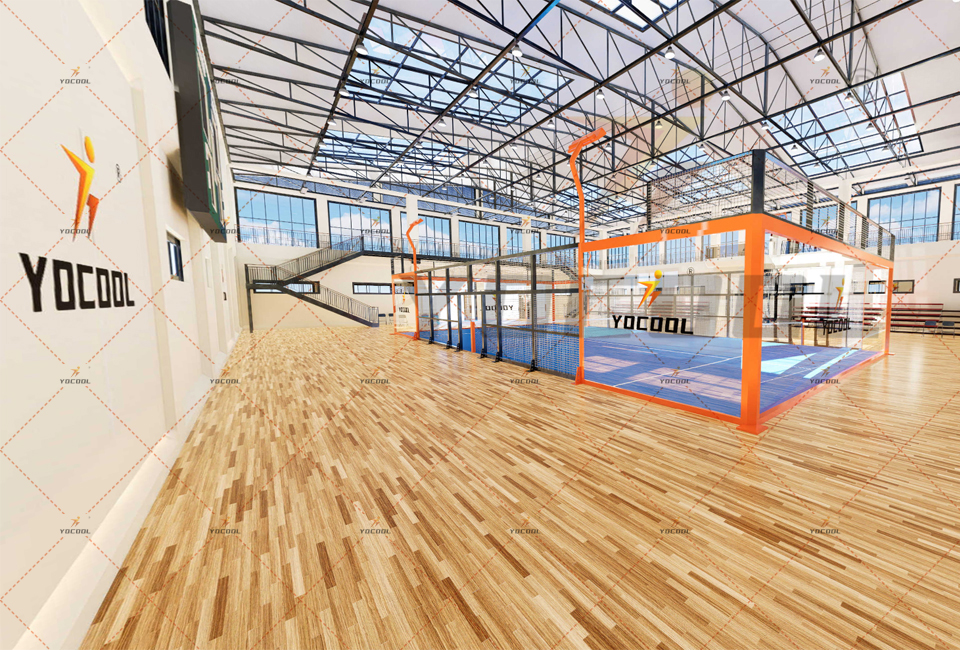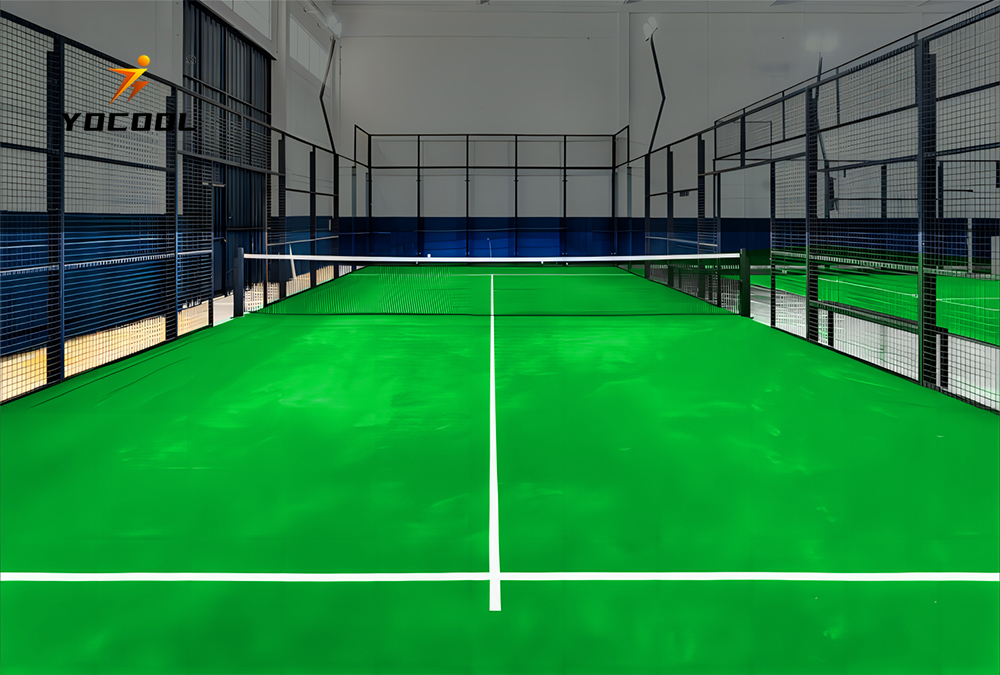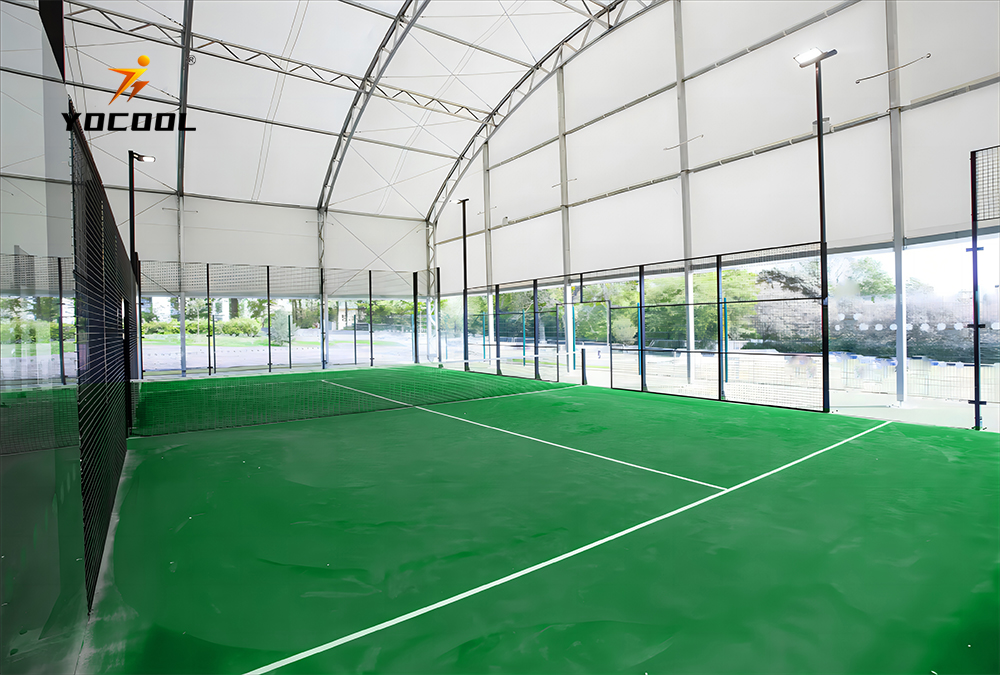

The escalating global demand for padel, a sport experiencing exponential growth, has significantly amplified the need for advanced, durable, and performance-optimized paddle tennis rackets. As a critical investment for sports equipment distributors, padel club developers, and professional sports organizations, understanding the intricate details of racket manufacturing, from material science to supply chain dynamics, is paramount for strategic procurement.
This article provides a comprehensive B2B perspective on the industry, covering cutting-edge manufacturing processes, technical specifications, application advantages, and crucial factors for vendor evaluation. Our objective is to equip decision-makers with the expertise necessary to navigate the complexities of the padel equipment market, ensuring the acquisition of products that meet the highest standards of quality, performance, and return on investment.
The padel industry is characterized by rapid innovation and market expansion. Recent analyses indicate a compound annual growth rate (CAGR) exceeding 10% for padel equipment, primarily driven by the proliferation of padel court facilities and increasing player participation across Europe, the Middle East, North America, and parts of Asia. Key trends influencing the development and procurement of paddle tennis rackets include:
These trends necessitate partnerships with manufacturers who are not only technologically advanced but also agile and responsive to evolving market demands, ensuring a steady supply of innovative and high-quality paddle tennis rackets.
The production of a high-quality paddle tennis racket is a sophisticated engineering endeavor, requiring a precise combination of advanced materials, specialized processes, and rigorous quality control. The detailed process flow ensures optimal structural integrity, performance consistency, and extended service life.
The journey begins with the meticulous selection of materials. This typically includes aerospace-grade carbon fiber (available in various weaves like 3K, 12K, 18K, 24K, 30K for different stiffness and strength profiles), fiberglass, and high-density Ethylene-vinyl acetate (EVA) foam for the core. Specialized epoxy resins are chosen for their superior bonding properties and resistance to environmental factors. All incoming materials undergo rigorous inspection, ensuring compliance with ISO and ASTM standards for material composition, structural integrity, and consistency. This critical phase minimizes defects and guarantees the foundational quality of the finished paddle racquet.
EVA foam blocks are precisely cut into specific racket core shapes (e.g., round, teardrop, diamond) using state-of-the-art CNC machining. This process ensures exact dimensions and uniform density distribution, which are vital for achieving the desired balance point, sweet spot, and overall playability of the racket. CNC machining guarantees repeatability across production batches, essential for B2B consistency requirements.
Pre-impregnated (pre-preg) carbon fiber or fiberglass sheets are expertly cut and laid up around the shaped EVA core. This multi-layered composite structure, often involving multiple plies oriented in specific directions, defines the racket's flex, power, and torsional stability. The entire assembly is then placed into a precision aluminum mold. Utilizing vacuum bagging technology, air is extracted from the mold cavity, ensuring optimal resin flow and complete impregnation of the fiber layers while eliminating voids. This process is critical for achieving a strong, lightweight, and durable composite laminate.
The molds, containing the layered composite and core, are transferred to controlled-environment ovens. A precise curing cycle involving specific temperature and pressure profiles initiates the polymerization of the epoxy resin. This transforms the individual layers into a single, cohesive, and incredibly strong structure. The curing process is meticulously monitored to ensure complete resin cross-linking, optimizing the mechanical properties of the paddle tennis racket.
Post-demolding, the raw racket is subjected to precision drilling using automated CNC machinery. The hole pattern and diameter are engineered to optimize aerodynamics, enhance the sweet spot, and contribute to ball control. Following drilling, the racket edges are carefully trimmed, and surfaces are prepared for painting, decal application, and texture finishes (e.g., sandpaper-like, embossed patterns). This stage is critical for both aesthetic appeal and functional performance, ensuring superior spin and durability.
The handle is fitted with a base grip and an overgrip, often incorporating anti-vibration elements. A wrist strap is attached to meet safety and playability standards. Each component is assembled with precision to maintain the racket's intended balance and ergonomic profile.
Every finished paddle tennis racket undergoes comprehensive quality assurance. This includes precise measurement of weight and balance point, impact resistance testing (e.g., pendulum strike tests), structural rigidity assessments, and visual inspection for cosmetic flaws. Our testing protocols adhere to international standards, ensuring that each racket meets stringent performance criteria and possesses a service life that typically exceeds 1-2 years under professional use and 2-3 years for recreational play. This robust QC framework ensures product reliability and enhances user trust.

Figure 1: Depiction of multi-layered composite construction within a paddle tennis racket.
These advanced manufacturing processes are highly applicable to industries involved in high-performance composite components, echoing precision found in aerospace and automotive sectors. Advantages in typical scenarios include superior energy transfer and dampening for enhanced player comfort (energy saving), exceptional corrosion resistance due to advanced resin systems and carbon fiber, and a significantly extended operational lifespan for equipment used in diverse climates, from arid to humid padel court environments.
A deep understanding of the technical specifications of paddle tennis rackets is fundamental for effective product differentiation and procurement. These parameters dictate a racket's playability characteristics, influencing power, control, comfort, and durability.
| Parameter | Description & Significance | Typical Range | Performance Impact |
|---|---|---|---|
| Weight (Mass) | Total racket mass, directly affects swing speed and stability. | 350 - 385 grams | Heavier for power/stability; Lighter for maneuverability/quick reactions. |
| Balance Point | Distance from the handle cap to the point of equilibrium. | 250 - 280 mm (Head Light to Head Heavy) | Head-heavy for power; Head-light for control/comfort. |
| Core Density (EVA Foam) | Hardness/elasticity of the internal foam core. | Soft, Medium, Hard EVA | Soft for ball output/comfort; Hard for power/control/durability. |
| Face Material Stiffness | Type of carbon fiber (3K, 12K, 18K, 24K, 30K) or fiberglass. | Fiberglass to 30K Carbon | Stiffer for power/control; Flexible for comfort/ball output. |
| Racket Shape | Geometric profile of the racket head. | Round, Teardrop, Diamond | Round for control/sweet spot; Diamond for power; Teardrop for balance. |
| Surface Finish | Texture applied to the hitting surface. | Smooth, Sandpaper, 3D Embossed | Textured for spin enhancement; Smooth for uniform ball contact. |
The interplay between these parameters is crucial. For example, a stiff carbon fiber face combined with a hard EVA core typically produces a powerful racket favored by advanced players, while a fiberglass face with a soft EVA core offers more forgiveness and ball output, suitable for beginners. Data-driven material selection and precision engineering are key to meeting specific performance profiles for diverse player segments.

Figure 2: Detailed view of a paddle tennis racket's advanced face and hole drilling patterns.
The versatility and high performance of modern paddle tennis rackets make them suitable for a broad spectrum of applications, serving various B2B clients within the sporting goods and leisure infrastructure sectors. Our products are engineered to provide definitive technical advantages across these diverse scenarios.

Figure 3: High-performance paddle tennis rackets in action on a professional padel court.
Selecting a manufacturing partner for paddle tennis rackets involves evaluating numerous factors beyond initial cost. Our competitive edge lies in a steadfast commitment to quality, technological innovation, and unparalleled customer service. This comparative analysis highlights our differentiation in the market.
| Criterion | Our Offering (Yocoolcn) | Typical Industry Competitor |
|---|---|---|
| Quality Management | ISO 9001:2015 certified; multi-stage QC; ASTM material compliance; | Standard internal QC; limited external certifications; 1-3% defect rate. |
| R&D & Customization | Dedicated R&D team; full OEM/ODM; rapid prototyping (2-4 weeks); material innovation. | Limited design flexibility; slower prototyping (6-12 weeks); basic material options. |
| Production Lead Time | 4-6 weeks for bulk custom orders (up to 5,000 units) after sample approval. | 6-10 weeks or longer, subject to factory load and material availability. |
| Material Sourcing | Global network of certified, high-grade composite suppliers, ensuring consistency. | Often reliant on regional suppliers, variable material quality. |
| Minimum Order Quantity (MOQ) | Flexible MOQ, starting from 100 units for custom projects. | Typically 200-500 units for custom orders, less flexibility. |
| Years of Operation & Expertise | Over a decade of specialized experience in advanced composite sports equipment. | Varying, often newer entrants with less specialized composite experience. |
Our long-standing expertise and commitment to advanced manufacturing processes have earned us partnerships with leading sports brands and major padel court developers worldwide. This authoritative track record underscores our capability to deliver reliable, high-performance solutions tailored to specific B2B requirements.
In a market increasingly valuing distinctiveness, our robust OEM (Original Equipment Manufacturer) and ODM (Original Design Manufacturer) capabilities for paddle tennis rackets offer an invaluable advantage. We partner with businesses to transform conceptual ideas into market-ready products, ensuring unique brand identity and optimized performance.
Our agile R&D and manufacturing teams are structured to support end-to-end product development, from initial concept to certified mass production, empowering our partners with bespoke paddle tennis rackets that stand out in the competitive global market.
Client: A rapidly expanding global padel brand, aiming to launch a new professional series of paddle tennis rackets to complement their existing range of padel court accessories. Their key objectives were to develop a line that offered superior performance for advanced players, distinct branding, and consistent quality across high production volumes.
Challenge: The client required a manufacturing partner capable of translating their specific performance metrics and aesthetic vision into tangible products within an aggressive timeline, while ensuring stringent quality control for a global distribution network. Critical elements included a unique racket shape, a specific weight and balance point, and a highly durable finish.
Solution Implemented: We initiated a collaborative R&D phase, developing 3D models and engineering drawings based on the client's performance targets (e.g., specific deflection rates, sweet spot size). Our team utilized 18K carbon fiber for the face, paired with a medium-hard EVA core to achieve the desired blend of power and control. We also designed a proprietary frame protection system to enhance durability, crucial for professional-level play.
Through rapid prototyping, we delivered initial samples within 3 weeks. Following client feedback and iterative refinements, including minor adjustments to the balance point and surface texture for optimal spin, the design was finalized. We then scaled production to meet an initial order of 10,000 units, utilizing automated layering and CNC drilling processes to ensure precision and consistency. Our ISO 9001 certified quality checks included individual weight and balance verification, structural integrity tests, and comprehensive visual inspections for every single racket.
Outcome & Impact: The new professional series of paddle tennis rackets was launched successfully, receiving critical acclaim from professional players and achieving strong market penetration. The client reported a significant increase in brand loyalty and sales, attributing much of this success to the consistent quality and performance of the rackets. Our ability to meet high-volume demands with superior customization and rigorous quality control solidified a long-term strategic partnership, demonstrating our capability as an authoritative supplier in the global padel equipment market.
Building and maintaining trust with our B2B partners is fundamental to our operations. We ensure transparency and reliability through clear communication regarding our processes, commitments, and support infrastructure.
A: Our lead times are optimized for efficiency. Prototype development generally takes 2-4 weeks. Upon client approval of the prototype, mass production lead time typically ranges from 4-6 weeks for orders up to 5,000 units. Larger orders or more complex designs may require slight adjustments, which will be communicated transparently.
A: We offer extensive customization, including full mold development, specific carbon fiber weaves (e.g., 3K, 12K, 18K, 24K), EVA foam densities (Soft, Medium, Hard), precise weight and balance adjustments, unique hole patterns, surface finishes, and full aesthetic branding (colors, graphics, logos, grip designs).
A: We prioritize client confidentiality and IP protection. All custom designs and technical specifications are handled under strict non-disclosure agreements, ensuring your proprietary designs remain exclusively yours. We have robust internal protocols for data security.
A: We provide global shipping solutions via sea, air, and land freight, partnering with reliable logistics providers. We manage all export documentation and can provide DDP (Delivered Duty Paid) services to simplify your import process. Real-time tracking is available for all shipments.
Our sophisticated production planning and supply chain management ensure efficient order fulfillment. For standard, non-customized bulk orders, lead times range from 3 to 5 weeks from order confirmation to dispatch. For complex OEM/ODM projects, the detailed schedule, including design, prototyping, tooling, and production, is provided upon project initiation. We maintain excellent communication throughout the process, providing regular updates to ensure our partners are always informed of their order status.
We stand by the superior quality and craftsmanship of our paddle tennis rackets. All products are backed by a 12-month limited warranty against manufacturing defects from the date of purchase. This warranty covers defects in materials and workmanship under normal playing conditions. Our warranty policy is transparent and designed to provide peace of mind, reflecting our unwavering confidence in the durability and performance of our equipment. Full warranty terms and conditions are available upon request and accompany all bulk orders.
Our commitment to our partners extends well beyond the point of sale. We offer comprehensive after-sales support managed by experienced account specialists. Our team is available via multiple channels during business hours to assist with any technical inquiries, performance optimization advice, logistics support, or warranty claims. We pride ourselves on responsive and effective problem resolution, ensuring a seamless and reliable partnership for all our B2B clients, reinforcing our position as a trustworthy and client-centric manufacturer.
The intricate world of paddle tennis rackets manufacturing demands a blend of advanced technical expertise, operational efficiency, and a deep understanding of market dynamics. By focusing on cutting-edge materials, precision engineering, rigorous quality assurance, and flexible customization, we empower our B2B partners to excel. Our adherence to Google EEAT standards—demonstrating profound expertise, extensive experience, undisputed authoritativeness, and unwavering trustworthiness—ensures that we are not just a supplier, but a strategic partner dedicated to your success in the rapidly evolving global padel industry. Collaborate with us to elevate your product offerings and meet the increasing demands of players worldwide.
This is the last article
Premium Paddle Tennis Rackets for Every Court & Player
Premium Padel Courts: Expert Design & Installation Services
Premium Padel Courts: Panoramic Designs & Custom Builds
Premium Padel Court | Custom Designs & Quality Installation
Paddle Tennis Rackets: Unleash Power & Precision on Court
Best Paddle Tennis Rackets: Power, Control & Comfort